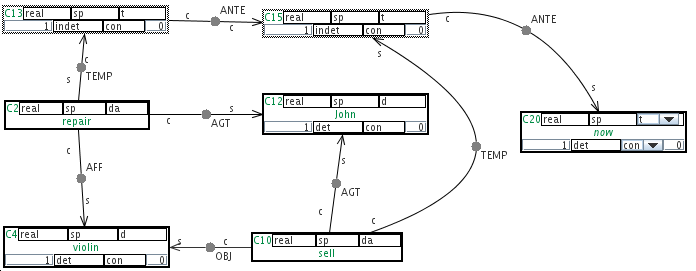TEMP: Temporal Frame
Definition: The assertion (s TEMP t) expresses that the situation s holds within the time interval t (or, if s is an event, that it occurs within t). If the first argument is of sort o, then the second argument specifies the time interval or moment when o exists. It should be emphasized that t may be disconnected.
There are three types of TEMP usage:
- With a situation (the most often):
John repaired the violin and sold it.
Here every situation is connected by TEMP relation with a node which represents the time when this situation occured. These temporal nodes can further be connected by various temporal relations. A shorthand annotation of the above example is this:
Here the meaning is the same as in the first network, but the time concepts are not explicitely created. Note: We'll use this shorthand method in our annotating since it's simpler.
- With an object
TEMPrelation can connect the object to the time when this object existed (e.g., “Friday lesson” will look like(lesson TEMP Friday)).
- With time concepts on both ends of the relation. In this case
(t1 TEMP t2)means that the time intervalt1lies somewhere within time intervalt2.
by Intelligent Information and Communication Systems Department of FernUniversität in Hagen.


